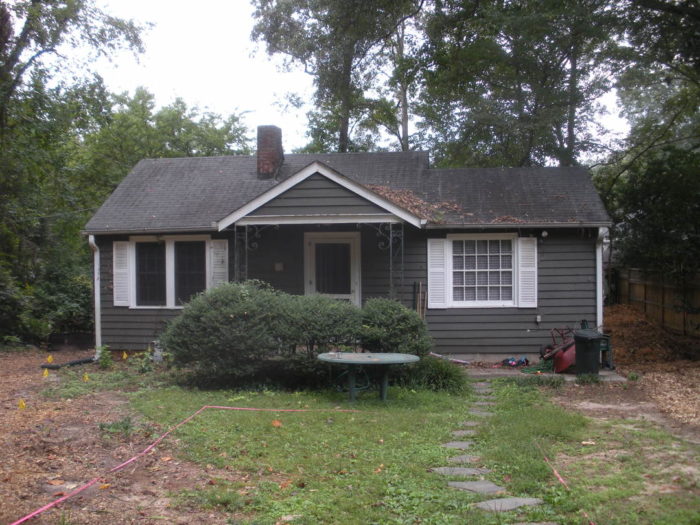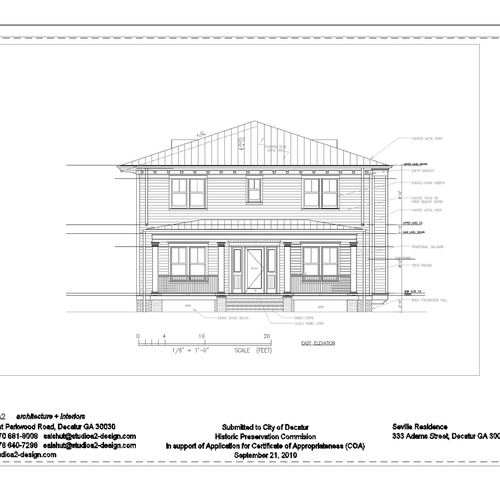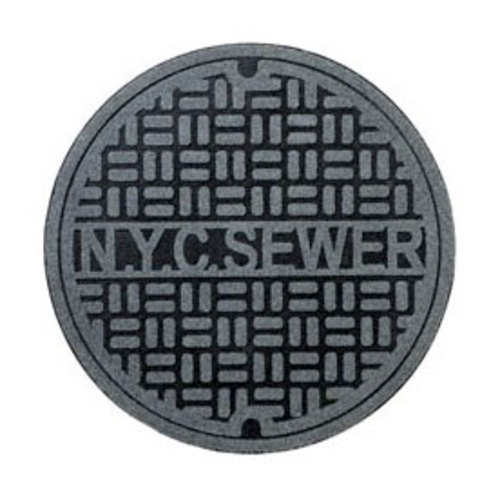
For those few of you who have been waiting breathlessly for updates on my new house, I finally have something to report. The preliminary plans were completed this fall and submitted to the local historic commission for approval, and that is where I ran into my first hiccup.
There is an existing cottage on the property that I was planning to demolish after my new house is complete. I was told by the commission staffer that the cottage is considered a “contributing structure” to the district, and I would have a hard time getting approval to remove it.
Setting aside the fact that I was told exactly the opposite several years before and the issue never came up during an earlier review of my plans, the cottage may be old, but calling it historic, let alone even a house, is a bit of a stretch. While currently all of 700 square feet, the original house was barely more than 400, having undergone two additions and the replacement of the front porch floor and columns sometime in the mid-20th century. It has been classified in a recent historic survey as an “American Small House” , while I would venture to say that it is more of a shack than a house.
Limited options
While I will still argue my case to remove the cottage and replace it with a modest carriage house with an apartment, I have to plan for the possibility that I will need to keep it.
My first backup plan is to remove the additions and relocate the cottage farther back on the property to turn it into a garage. This will be extremely costly and provide me with a garage with no apartment above.
Farther down the list is to move it as-is and keep it as a rental property, with no garage. This last option is what causes me the most distress. The cottage has wood lap siding attached directly to the studs with no wall insulation. While terribly inefficient, this construction is durable and makes the walls very resistant to mold and rot with excellent drying potential. Having lived in this structure for several years, I am acutely aware of its problems and wish none of them on future tenants.
I am, however, very reluctant to insulate the existing walls, as this will almost certainly cause new moisture, air quality, and durability problems — unless of course, I remove all the siding and windows, install a complete weather barrier, and reinstall all the siding. If not, the building will continue to be profoundly inefficient and uncomfortable for anyone living there. Do I spend the money required to do this so that I can rent it in good conscience, or just leave the structure unfinished and unoccupied and use it for unconditioned storage?
Historic vs. sustainable vs. logical
I seem to have run up against an impenetrable wall of resistance to change that will be a challenge to overcome. I have considerable respect for historic buildings and appreciate the fact that I live in a neighborhood that is protected from irresponsible development. On the other hand, classifying every structure over 50 years old as historic and requiring permanent protection may be going a little too far.
Should I be required to spend well in excess of the value of a building to maintain it for some esoteric concept of historic value, and then spend even more to bring it up to my personal minimum requirement for health and efficiency before I allow someone to occupy it? Or should I do the minimum possible work and keep it as an empty tribute to early-20th-century shacks the world over?
Next steps
Interestingly, my hearing was canceled due to the commission lacking a quorum, and is now rescheduled for mid-November. My expectation is that I will be approved to build the new house as long as I keep the existing building somewhere on the property. If all goes as planned, I can focus on getting construction started on the new house while weighing my options for the existing building. Stay tuned; I am sure it will be an interesting ride.
Just for inquiring minds, here are the current plans for your perusal.
Weekly Newsletter
Get building science and energy efficiency advice, plus special offers, in your inbox.















3 Comments
Between a Rock and a Hard Place
Carl,
You definitely seem to be stuck between an illogical rock and a hard place. I agree that it does not seem reasonable to classify every structure over 50 years old as "historic". What would happen if the structure received major storm damage or burned? Would you be required to restore it to its original state? It seems that you are being responsible by wanting to build something that will fit into the neighborhood and a good case is made for actually improving the aesthetics of the area.
Maybe you can charge for historic tours on the weekends? :)
Well Carl,
My best advise to
Well Carl,
My best advise to you is a date, a movie, and Southern fried chicken. Of Course, allow the chicken to cook for a full 2 hours. Check the movie section for a distant locations and times.
Considering the homes location, and that you leave town monthly to pursue some sort of walkabout, you shouldn't have a problem finding some vandal or degenerate to do "that what you cannot".
Last...take the Avondale approach and use the neon purple with green polka dot paint job as a persuasive means to reverse the city's approach to 'hysterical preservation."
Good looking plans
Peter did you well with his plans. That house looks as though it belongs on your street. I think you will be persuasive in your arguments. You might mention how well regarded Peter and his firm are in the green building world. This is not just any ordinary in-fill project. Good luck, Carl.
Log in or create an account to post a comment.
Sign up Log in